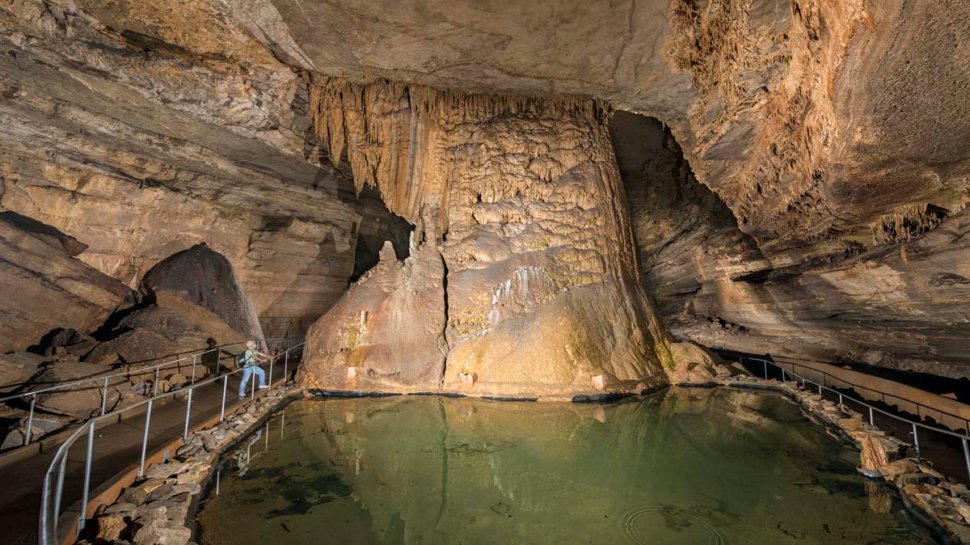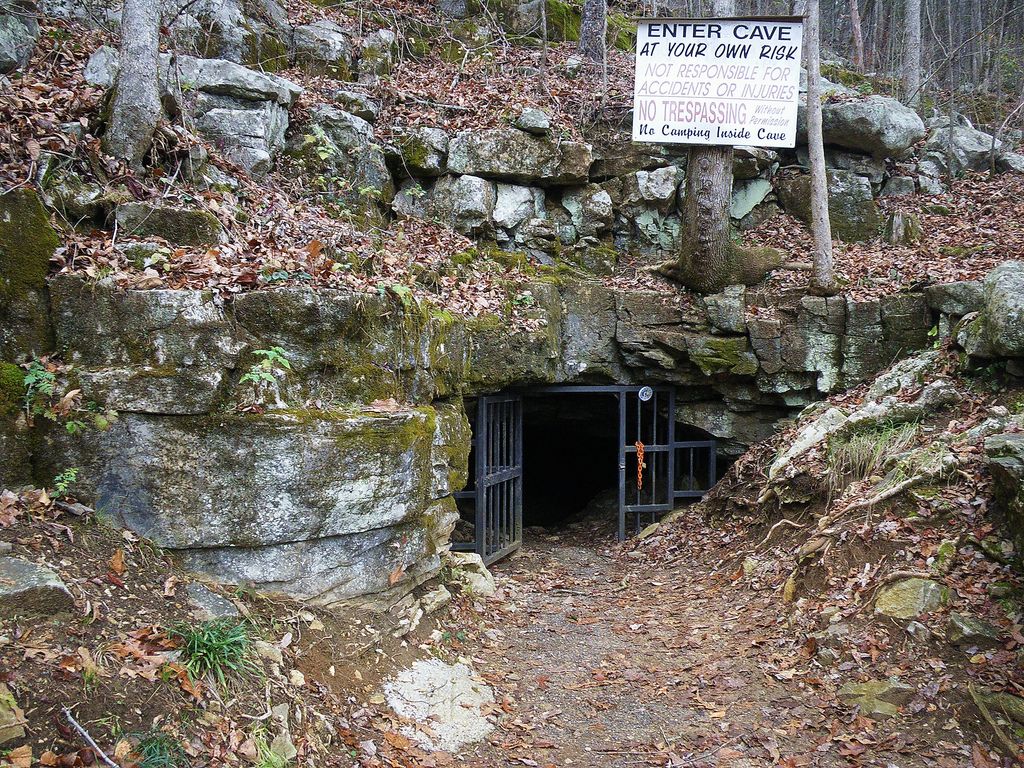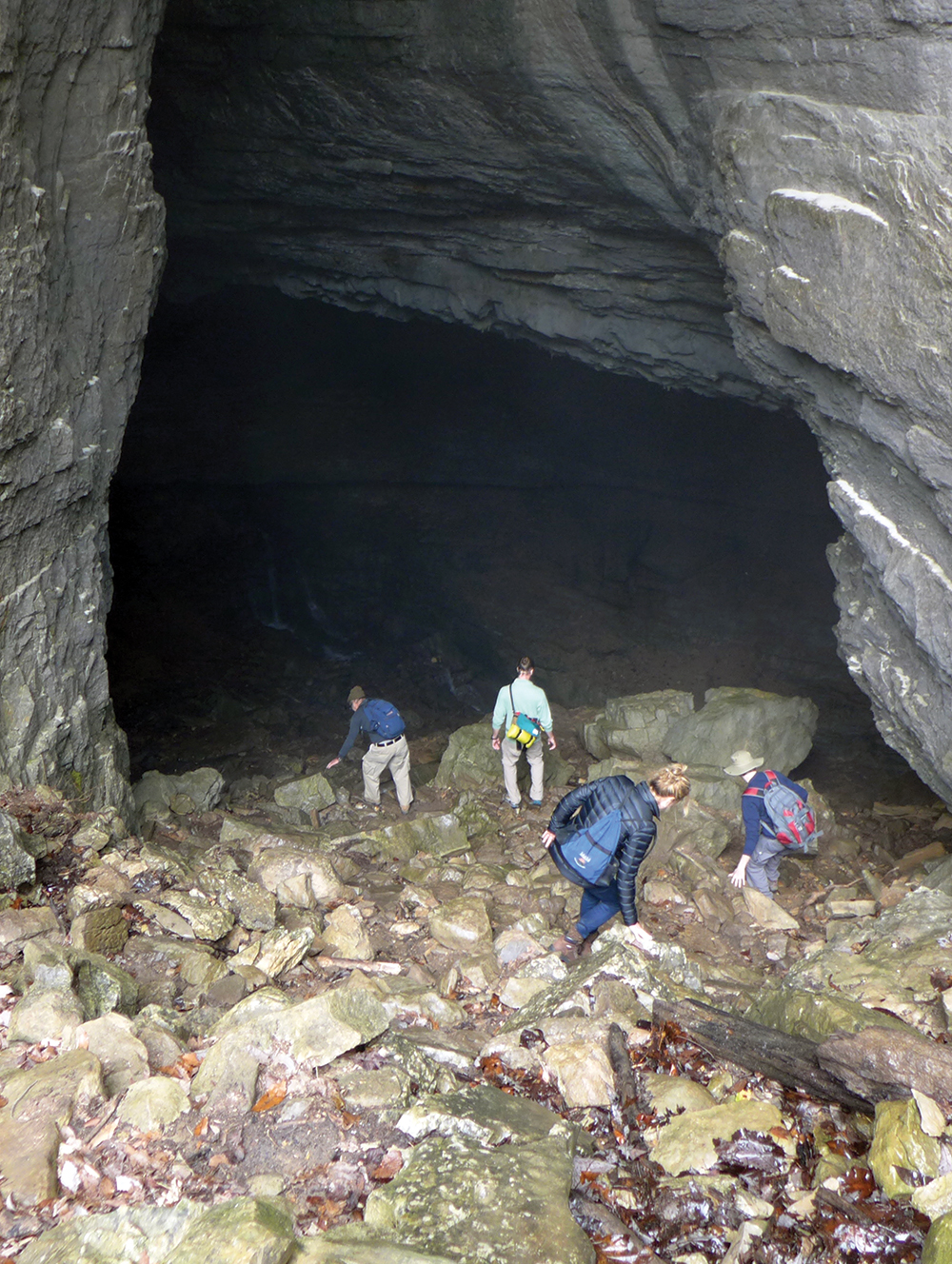Cathedral Caverns Has Some Very Unique Natural Attractions
Cathedral Caverns is a very large “karst cave” that covers over 3 acres, and it is best known for its major attraction; its massive entrance.
The entrance to this magnificent natural structure is a whopping 126 feet wide and approximately 25 feet high.
It is believed to be the largest natural entrance to a cave in the world.
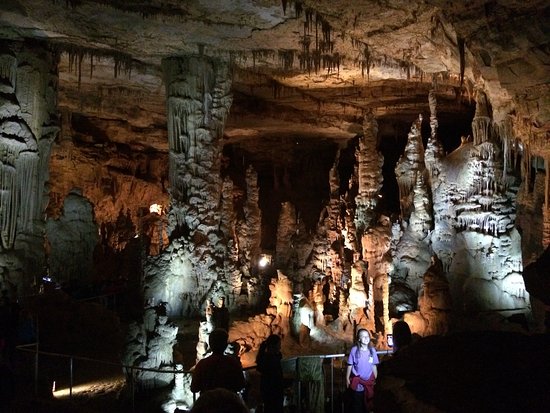 Deep Inside Cathedral Caverns
Deep Inside Cathedral CavernsIt also has another very unique factor; it gets even better as there are several natural attractions on the inside of this wonderful nature made Cathedral.
It is located about 5 miles northeast of the town of Grant, and about 7 miles southeast of Woodville Alabama.
The History of Cathedral Caverns
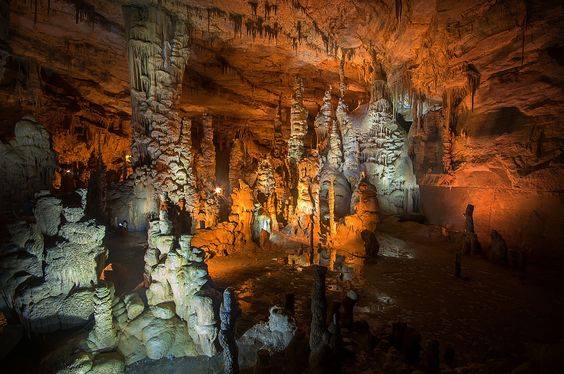 Cathedral Caverns in Alabama
Cathedral Caverns in AlabamaCathedral Caverns is a publicly owned recreational area that includes a state park, and when it was first discovered, it was known as “Bats Cave”.
It was developed as public tourist attraction in the early 1950’s, and was officially declared a National Natural Landmark in the year 1972.
It was opened to the public as a State Park in 2000.
Early Archaeological testing has indicated that the entrance into the Cavern showed that Native Americans lived there.
It is estimated that they may have lived there for over 200 years, dating back into the 1700’s.
The area that is located around the Cathedral Caverns was settled by a family by the name of Kennamer, where it became known as a cove by the same name.
There are stories that this family actually lived in the cave after troops from the Union Army burned down their house, during the Civil War.
In the mid 1950’s it was set up and then ran as a tourist attraction by Jacob Gurley and other parties, until it was sold to the State of Alabama in 1987.
After several delays, the State finally opened it up to the public in the year 2000.
Cathedral Caverns is known by what is referred to as a “karst cave”, and has very a large stalagmite forest that covers over 3 acres in size.
“Karst Caves” are described as being formed when soluble rocks such as limestone, dolomite, or gypsum are dissolved.
This type of formation is very common in sinkholes, as well as in caves.
Landscapes such as this structure are formed by falling water that hits the surface, and then interacts with the subsurface.
It interacts by going through cracks, fractures, as well as holes in the bedrock.
After traveling for long distances, the water is discharged and can form cave entrances.
Not all of Cathedral Caverns is open to the public, but the part that is can best be described as “breathtaking”.
The part of the cave that is open to the public has 8 foot wide paved walkaways that are wheel chair friendly, and they go for over two miles.
There is a lot more to the cave that exists after the pavement ends, but it is not fully explored as of yet.
The Features in Cathedral Caverns
 The Paved Walkway In Cathedral Caverns
The Paved Walkway In Cathedral CavernsOutside of the world setting entrance, there are several very unique features in Cathedral Caverns.
They include the following.
- Goliath
- A Flowstone Waterfall
- The “Improbable” Stalagmite
- The Big Room
- The Mystery River
Goliath
One of the most famous features of Cathedral Caverns is Goliath, which is the name given to one of the world’s largest known stalagmites.
This massive stalagmite is a whopping 45 feet tall and over 240 feet in circumference.
It is so massive in its height that it reaches the ceiling of the cave.
There is also a very large “forest type” formation of stalagmites that are best described by seeing them in person.
The Flowstone Waterfall
The next interesting feature found in Cathedral Caverns is a very large “flowstone” waterfall that measures over 32 feet tall and is about 130 long.
This “waterfall” has been referred to as a “frozen waterfall’ over the years and is quite common in caves.
Flowstones are made up of almost paper or sheet like deposits of calcite, as well as other materials made of carbonate.
They are formed when water flows down the wall of a cave and are the most common in limestone caves.
However, they can form in any type of cave where water has entered and has “picked up” this type of material that dissolves.
They basically form as the result of the degassing of these affected waters.
The “Improbable” Stalagmite
The next of the unique features of Cathedral Caverns is the “Improbable” stalagmite.
Stalagmites are formed on the floor of caves by the dripping of percolating calcareous water, and generally have a fair-sized diameter.
They also generally grow almost straight up, toward the ceiling of a cave.
However, this very “improbable stalagmite” only has a base that is 3 inches at its diameter and rises at a 45-degree angle.
It is estimated to be about 25 feet in total length, making it very unique in that it is still standing when it should not be.
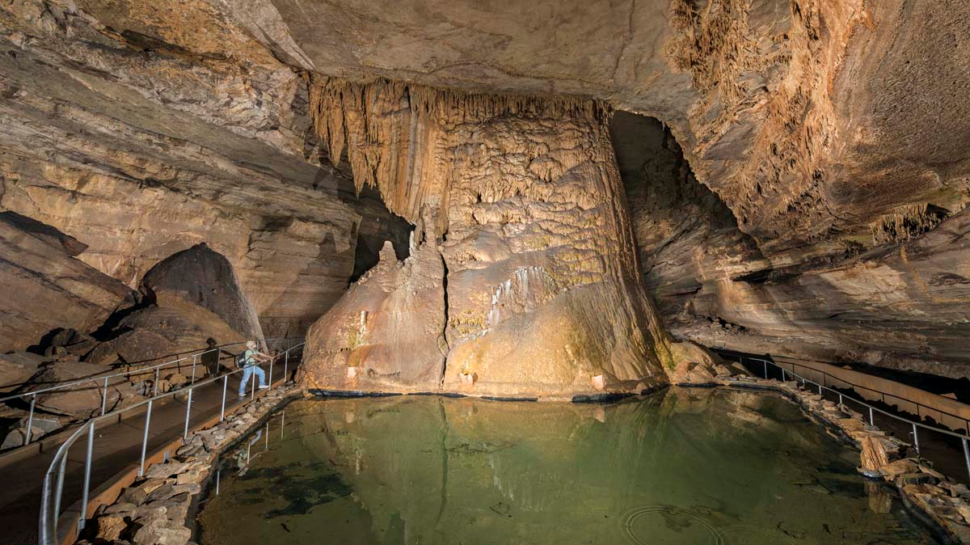 The Underground Beauty of Cathedral Caverns
The Underground Beauty of Cathedral CavernsThe Big Room
The Big room in the Cathedral Caverns is exactly what the name implies, as it is “big”.
It is estimated to be about 790 feet in length and is over 200 feet wide.
When you first witness it in person, it is absolutely stunning to see a room that is this big inside of a cave.
It is so unique, that the only way to accurately describe it is to see it first-hand.
The Mystery River
The final major attraction is the Mystery River, and it is aptly named because no one is sure where it comes from.
It is believed that Native Americans used this river to gather water, but it was Mr. Gurley that first discovered it.
He discovered it when he was first exploring the cave, and he knew at once that he had made an amazing discovery.
He built a bridge over the river to bring supplies deeper in the back of the cave, but his dream of building a rope bridge for visitors never happened.
This “mystery river” exits and drains into the nearby Paint Rock River.
Cathedral Caverns offers tours throughout the day, and the nearby state park offers gem mining as an activity.
Gem mining is extremely popular with young children, as is touring this very unique cave.
References
https://www.alapark.com/parks/cathedral-caverns-state-park

Alabama Gift Store
Numerous Items for You and Your Family to Enjoy
See it here at the Gift Store
Copyright 2019-2023 Alabamabackroads.com
All Rights Reserved
